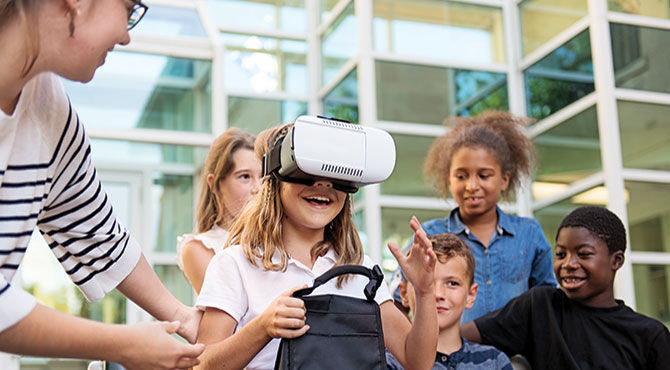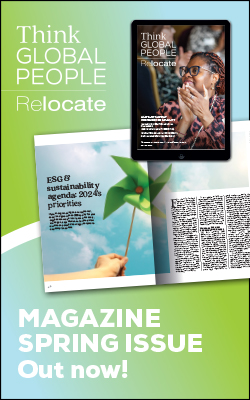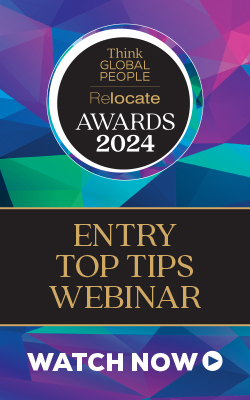Technology in schools: Future changes in the classroom
David Devey, head of learning technology at The Alice Smith School, Kuala Lumpur, examines the latest education-related technology and offers his predictions for the future.

Virtual reality joins the mainstream
Virtual-reality (VR) technology has been around since the early 1990s, a time when graphics were neon and blocky, and where entering a virtual world involved strapping a three-kilogram helmet to your head and stumbling around a restrictive circular treadmill. This type of VR experience was a novelty, at best.Fast forward 30 years and the virtual-reality experience has developed to the point where it is about to hit the mainstream. The first product to launch this revolution was the much-hyped and now Facebook-owned Oculus Rift, one of the most successful Kickstarter campaigns of all time. With a product that has been in development for over three years, the vision has given many companies the time to experiment.Google probably had the biggest impact on education with its Google Cardboard, a cardboard viewing device that would allow the user to strap a phone to his or her head, giving a pseudo VR experience. Despite its almost comedic value, it did pave the way for a significant number of VR services, including VR YouTube and a variety of VR ‘experiences’. You can already go on a virtual ascent of the Eiger, using no more than Google Cardboard, your phone, and access to YouTube.Since then, the HTC Vive, Windows VR and the Playstation VR have reached the market. All of them promise to drop players into lifelike and truly immersive worlds from the comfort of the sofa.The technology is already being built natively into every copy of Windows 10. At this stage, the Rift and Vive are prohibitively expensive and require a fast, costly PC to power them. The Windows VR has only just been announced, and not many details are known. The Playstation VR offers inferior hardware but a far more accessible price. Either way, these are the first steps to getting virtual reality into the hands of consumers.Revolutionising teaching and learning
So what does this all mean for the classroom? As the cost of these devices drops and equipment becomes standardised, they will become more accessible to schools.Imagine teaching the Battle of Hastings in such a way that students can immerse themselves in that world; imagine learning how glaciers form, or what it’s like on the surface of Mars, by visiting these places. Already, you can use Tilt Brush to create VR art, play Minecraft in VR, or experience what it’s like to climb Everest.As the technology becomes more prolific, more and more developers will create useful educational applications.Let’s not forget the offshoot of VR: augmented reality. The Microsoft Hololens is a product that allows you to explore the physical world, with a digital overlay. Imagine being able to study engineering in such a way that, instead of looking at pictures in a textbook, you can manipulate virtual objects and see how they could fit with physical ones.This technology is already being used in the medical industry to train doctors, and it has the potential to revolutionise the way we learn. A few years ago, this was a fantasy world, but the reality of a virtual world is now just around the corner. Very soon, the children of tomorrow will be able to learn through a world of experiences that were never before possible – all without leaving the classroom.
Now available as an ebook on Amazon! Simply download from Amazon onto your Kindle, mobile phone or tablet to read wherever you are!
For related news and features, visit our Education & Schools section.Access hundreds of global services and suppliers in our Online Directory
 Get access to our free Global Mobility Toolkit
Get access to our free Global Mobility Toolkit  © 2017. This article first appeared in the 2017 edition of the Guide to International Education & Schools, published by Profile Locations, Spray Hill, Hastings Road, Lamberhurst, Kent TN3 8JB. All rights reserved. This publication (or any part thereof) may not be reproduced in any form without the prior written permission of Profile Locations. Profile Locations accepts no liability for the accuracy of the contents or any opinions expressed herein.
© 2017. This article first appeared in the 2017 edition of the Guide to International Education & Schools, published by Profile Locations, Spray Hill, Hastings Road, Lamberhurst, Kent TN3 8JB. All rights reserved. This publication (or any part thereof) may not be reproduced in any form without the prior written permission of Profile Locations. Profile Locations accepts no liability for the accuracy of the contents or any opinions expressed herein.
































